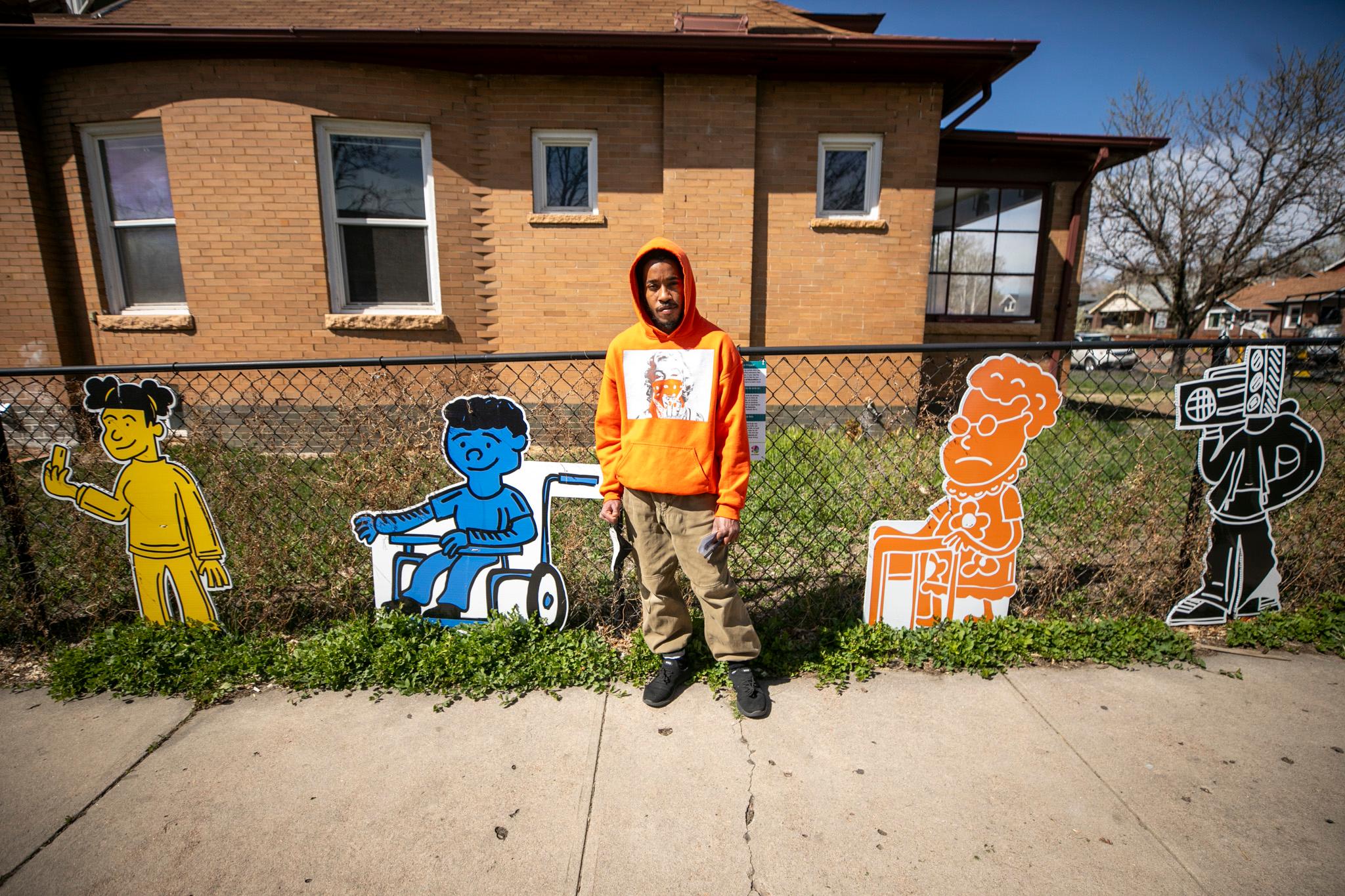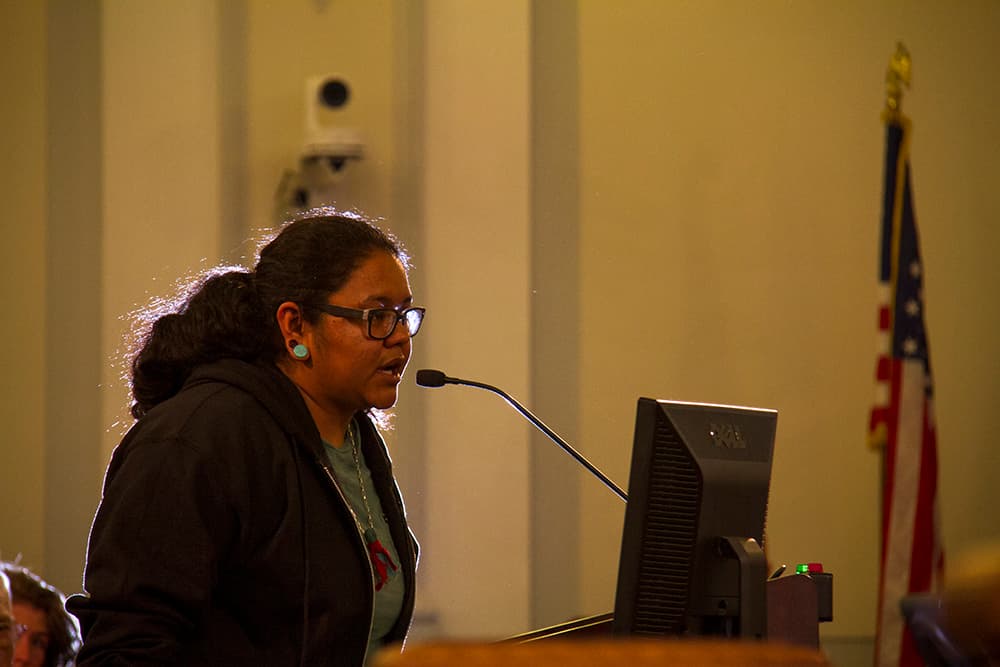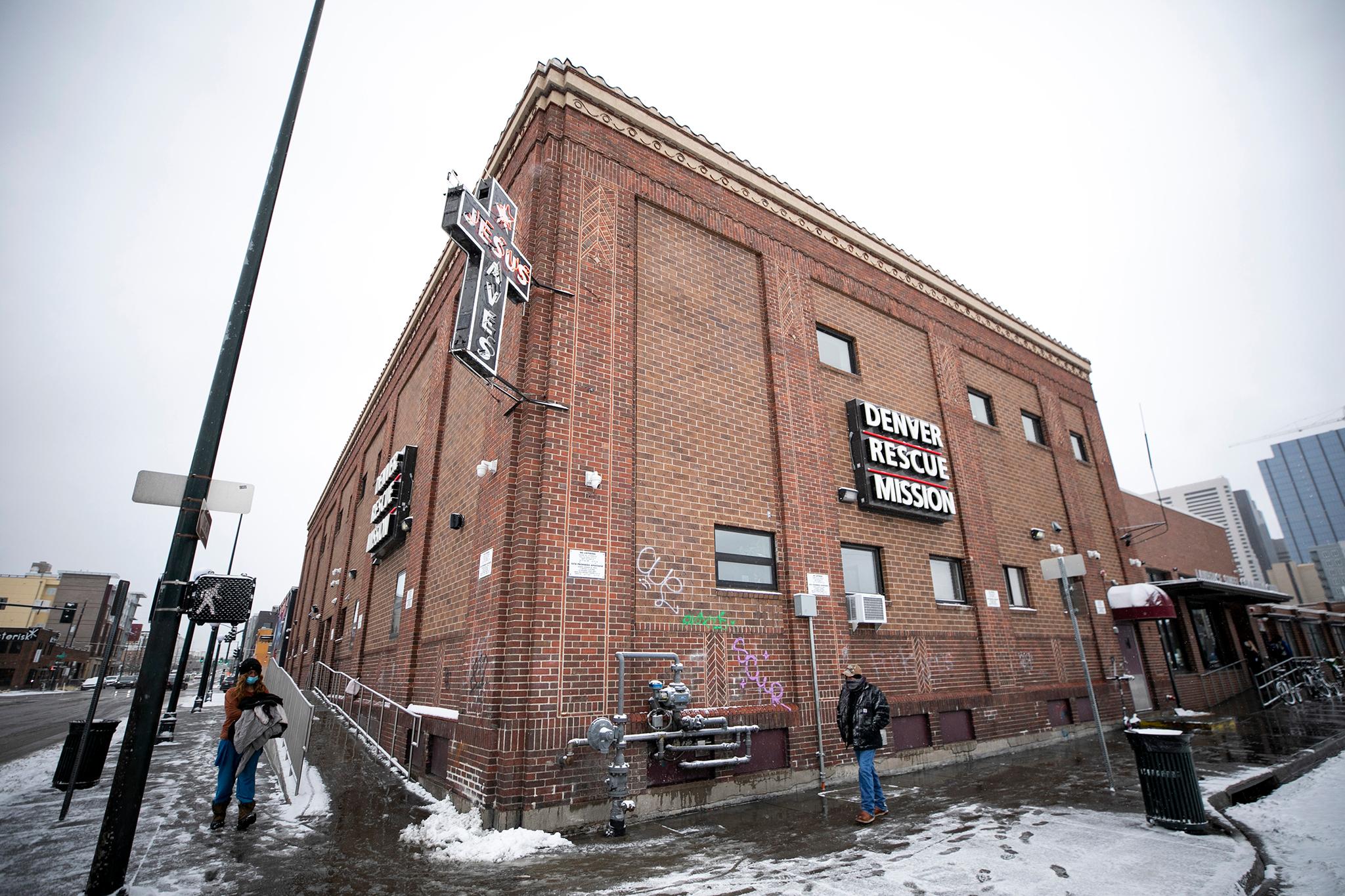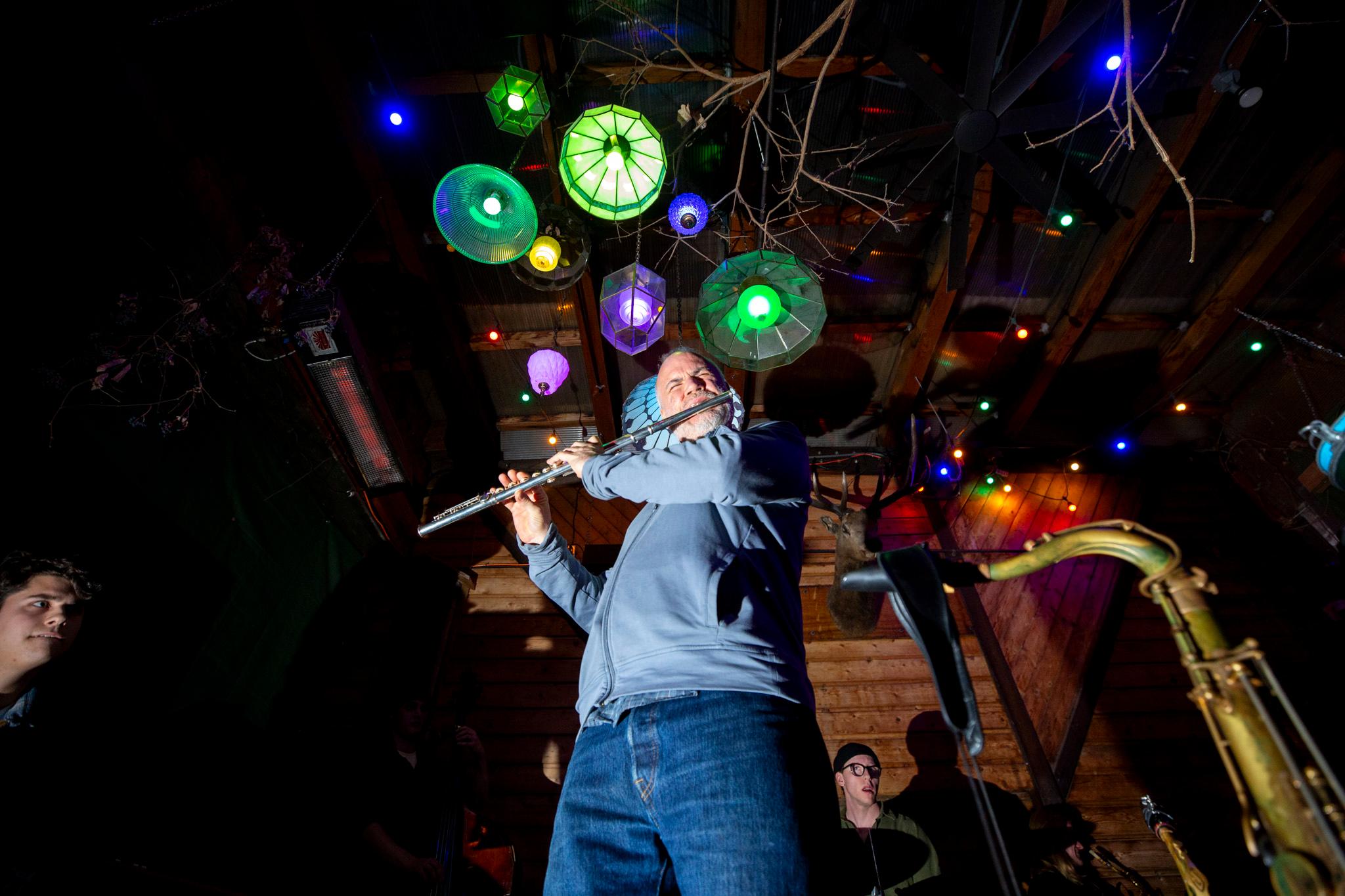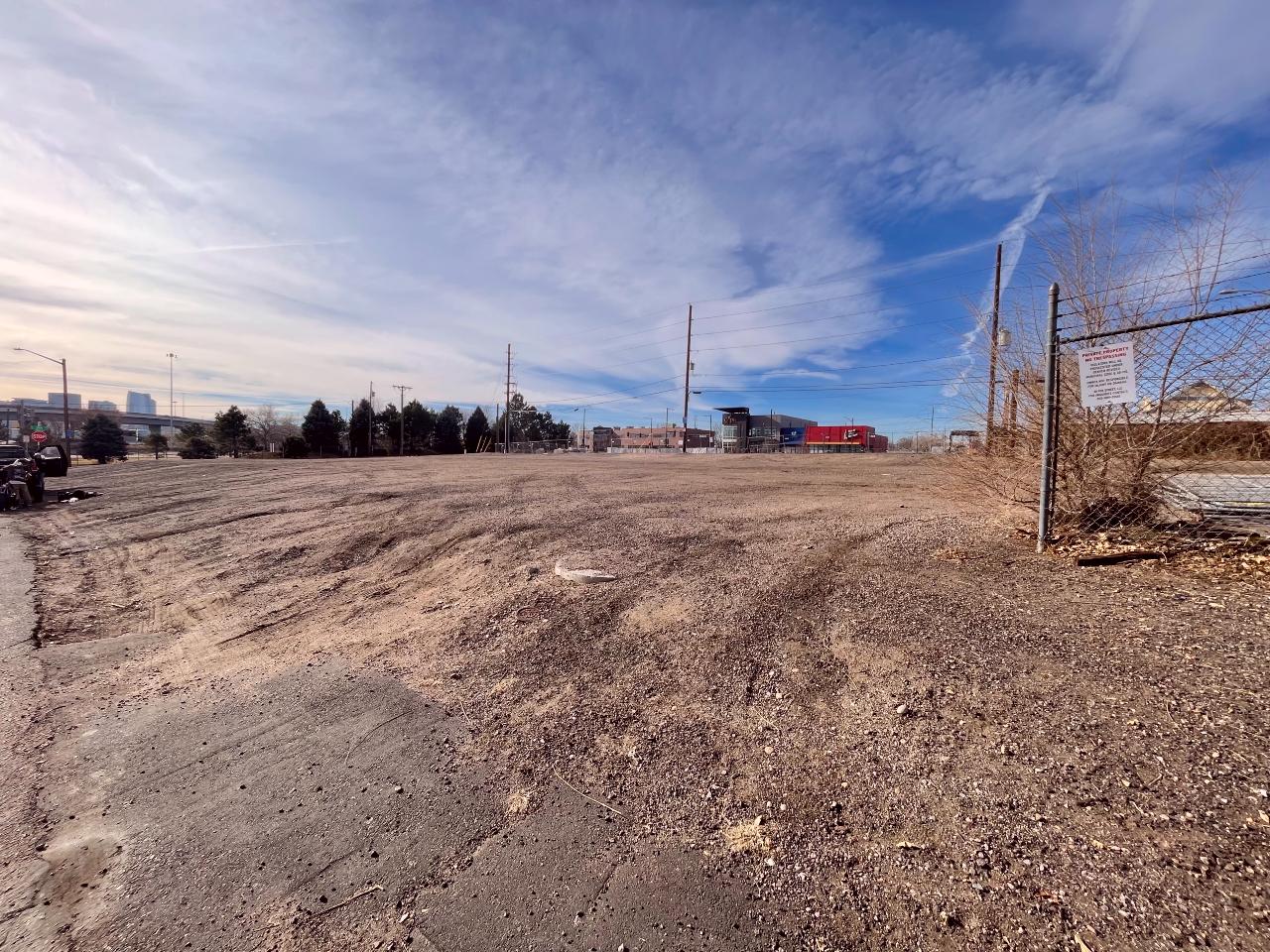Like so many bus stops in Denver, AJ Kiel’s regular bus stop in the Cole neighborhood is noisy, littered with trash and has no protection against the elements.
Kiel regularly takes the 43 bus from Cole to Santa Fe, where he’s been creating art for the Access Gallery, a nonprofit arts organization for people with disabilities, since 2006. As an avid bus rider, he’s seen it all.
Now his experience is making bus stops better — and more beautiful — for others.
Kiel is one of three artists who have installed artwork at Denver bus stops to raise awareness of poor conditions for transit users trying to get around the city.

His art piece, at Martin Luther King Jr. Boulevard and York Street, depicts several characters, including a child using a wheelchair and an elderly woman using a walker, waiting for the bus.
“My artwork is about the people who take the bus every time when struggling,” Kiel said. “If it's raining or snowing or bad weather or something.”
Transit advocates embarked on a ride-along with city officials to show off the art and poor pedestrian conditions.
Jonathan Stalls, a pedestrian advocate and author, led a group that included Denver Department of Transportation and Infrastructure executive director Amy Ford to Kiel’s bus stop.
The trip started in Central Park, near a shopping center that included a Goodwill, a Walmart and several stores with highly discounted goods. In other words, the area is ripe for pedestrians who rely on public transportation because they cannot afford a car.

But the built environment doesn’t reflect that fact. At the first bus stop, where five routes stop, passengers had no bench to sit on, even though Google Maps shows a bench installed there in June 2024. Instead, many sit on overturned Walmart shopping carts.
People walking to other bus stops or their homes can also encounter uncomfortable conditions that are harder to traverse. In this case, bad sidewalks.

“The other side of this sidewalk, it turns into a really inaccessible kind of gravel path,” Stalls said.
After a short trip on the 43 bus, the group arrived at Kiel’s regular bus stop at Martin Luther King Jr. Boulevard and York Street. Immediately, Jill Locantore, the executive director of Denver Streets Partnership, pointed at a box of chicken wings left on the bus stop’s bench — another sign of the poor conditions transit users have to face.
“There's trash on the bench here. No trash can,” she said. “There's nobody to pick up the trash.”

Kiel’s art was installed on the fence of a local family.
Eddie Battle Jr. said living in front of the bus stop is never boring.
“People leave bottles. People leave cups. People leave liquor. People leave drugs. People leave needles,” Battle Jr. said. “Kids walk around out here. My son plays out here.”

His family has lived in the area for decades. His dad “adopted” the bus stop and cleaned it up regularly, but when he died in 2019, there was no longer consistent care for the bus stop.
Instead, Battle Jr. said it's something the city and Regional Transportation District should be responsible for.
“You can't have an 85-year-old man picking up everybody else's trash,” he said. “And neither should it be anybody's responsibility that is needing to use the bus.”
Two more bus stops are decorated with art, but advocates say thousands more lack basic pedestrian dignity.
DOTI officials said during the trip that of the 2,700 bus stops in Denver city limits, only about 300 of them have shelters.
Signs installed at the sites of all three bus stops ask transit riders and passersby to share their stories with the Pedestrian Dignity project. Each sign includes a weblink and a phone number to leave voicemails about the issue.

“I think it's a much better way to be thinking about community engagement and how do we address the people who are really hurting the most in our community and not just people who have the time and the luxury to go to community meetings,” Locantore said.
The feedback will be used by local transit advocates to better lobby city leaders to devote more funds towards pedestrian infrastructure. Advocates said Denver’s upcoming bond proposal could be used to pay for vital improvements.



